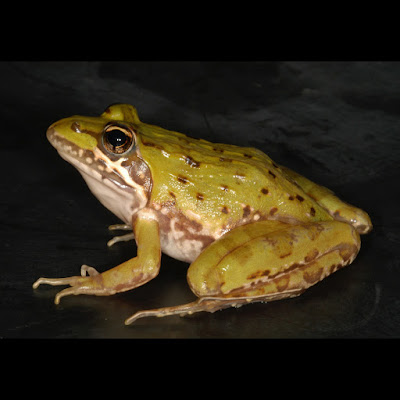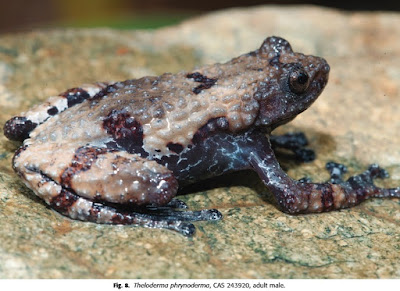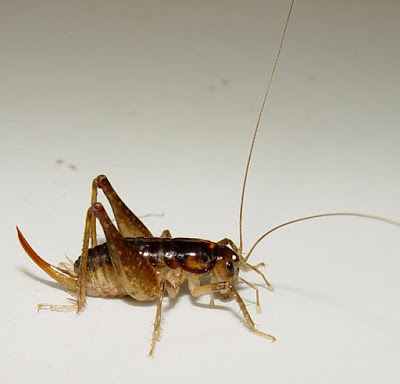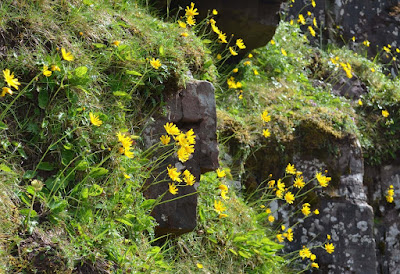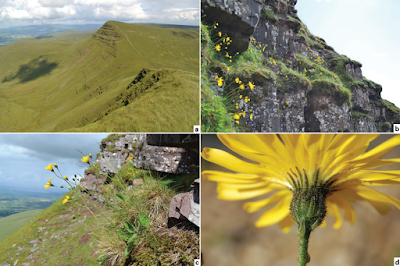[Most Recent Entries] [Calendar View]
Thursday, August 25th, 2016
| Time | Event | ||||
| 2:39a | [Herpetology • 2016] Species Boundaries and Taxonomy of the African River Frogs (Pyxicephalidae: Amietia)
Abstract A molecular phylogeny of the Afrotropical anuran genus Amietia based on 323 16S sequences indicates that there are 19 species, including four not yet described. No genetic material was available for the nominal A. inyangae. We consider them to represent full species, and define them based on 16S genetic distances, as well as differences in morphology, tadpoles and advertisement call where known. An analysis based on two mitochondrial and two nuclear genes (12S, 16S, 28S and tyrosinase exon 1), from 122 samples, confirmed the phylogenetic relationships suggested by the 16S tree. We recognise and (re-) describe the following species: Amietia angolensis (Bocage, 1866), A. chapini (Noble, 1924), A. delalandii (Duméril & Bibron, 1841), A. desaegeri (Laurent, 1972), A. fuscigula (Duméril & Bibron, 1841), A. hymenopus (Boulenger, 1920), A. inyangae (Poynton, 1966), A. johnstoni (Günther, 1893), A. moyerorum sp. nov., A. nutti (Boulenger, 1896), A. poyntoni Channing & Baptista, 2013, A. ruwenzorica (Laurent, 1972), A. tenuoplicata (Pickersgill, 2007), A. vandijki (Visser & Channing, 1997), A. vertebralis (Hewitt, 1927), and A. wittei (Angel, 1924). Three further candidate species of Larson et al. (2016) await formal naming. We provisionally regard A. amieti (Laurent, 1976) as a junior synonym of A. chapini (Noble, 1924). Amietia lubrica (Pickersgill, 2007) is shown to be a junior synonym of A. nutti, while A. quecketti (Boulenger, 1895) is shown to be a junior synonym of A. delalandii (Duméril & Bibron, 1841), and A. viridireticulata (Pickersgill, 2007) is placed as a junior synonym of A. tenuoplicata (Pickersgill, 2007). On the basis of similarity of 16S sequences, we assign A. sp. 1, A. sp. 3 and A. sp. 6 of Larson et al (2016) to the nomina A. chapini (Noble, 1924), A. desaegeri (Laurent, 1972), and A. nutti (Boulenger, 1896) respectively. Keywords: Amphibia, Africa, Amietia, molecular phylogeny, haplotypes, advertisement calls, tadpoles, new species, Amietia moyerorum sp. nov. A. Channing, J.M. Dehling, S. Lötters and R. Ernst. 2016. Species Boundaries and Taxonomy of the African River Frogs (Amphibia: Pyxicephalidae: Amietia). Zootaxa. 4155(1); 1–76. Larson, T.R., Castro, D., Behangana, M. and Greenbaum, E. 2016. Evolutionary History of the River Frog Genus Amietia (Anura: Pyxicephalidae) reveals Extensive Diversification in Central African Highlands. Molecular Phylogenetics and Evolution. 99, 168–181. DOI: 10.1016/j.ympev.2016.03.017 Ninda Lara Baptista. 2011. A review of Amietia angolensis (Bocage, 1866) and Amietia fuscigula (Duméril and Bibron, 1841) (Anura: Pyxicephalidae), using morphology and advertisement calls | ||||
| 8:21a | [Herpetology • 2015] Rediscovery and Redescription of Theloderma phrynoderma (Ahl, 1927) (Anura: Rhacophoridae) from Myanmar
Theloderma is a widely distributed yet little-known genus of camouflaged tree frogs found throughout Southeast Asia. One member, T. phrynoderma, known only from the moist evergreen forest of the Karen Hills of Myanmar, is redescribed from two recently collected specimens and examination of type specimens. To date the only information available about T. phrynoderma is Boulenger’s brief 1893 description of two type specimens collected in 1888, and phylogenetic analyses to test its placement among other species of Theloderma is lacking due to an absence of specimens. In the present study, we compared two individuals collected in 2009 and 2010 from the Tanintharyi Nature Reserve to the type specimens of T. phrynoderma and proposed that they are also members of this species. We then used two mitochondrial genes (12S and 16S rRNA) and two nuclear genes (rhodopsin and tyrosinase) to infer the phylogenetic relationship of the putative T. phrynoderma to other members of Rhacophoridae, with a special emphasis on Theloderma. The recently collected individuals are of the same species within Theloderma but distinct from all other DNA sequenced congeners. The species redescription is based on a comparison of the newly found reference specimens with the lectotype and paralectotype. In addition, using a combination of morphological characters we provide a more complete diagnosis. The species is distinct from other congeners by a combination of the following characters: a mid-body size (female 44 mm SVL; male mean 41.3 mm SVL); tympanum diameter to eye diameter (70%); partial webbing between fingers; rugose skin with clumped, white-tipped calcified tubercles throughout the dorsal surface; webbing between fingers; distinct darker brown inverted V-marking between its shoulders; absence of vomerine teeth; and absence of vocal sacs. Redescription of Theloderma phrynoderma (Ahl, 1927) Figures 6–10; Table 3 Phrynoderma asperum Boulenger, 1893:342. Rhacophorus phrynoderma Ahl, 1927:47. Rhacophorus (Phrynoderma) phrynoderma Ahl, 1931:60. Rhacophorus (Rhacophorus) leprosus phrynoderma Wolf, 1936:158. Theloderma phrynoderma Inger, 1985:550. Geographic distribution.—This species is known from two localities in Myanmar (Fig. 1). The lectotype and paralectotype were collected in Thao, at an elevation of 1,300–1,400 a.s.l. The collected reference specimens were collected at a lower elevation of 59–82 a.s.l. from two sites in the TNR of northern Tanintharyi Division. Although separated by approximately 550 km, the Thao collection locality and Tanintharyi collection localities lie within a contiguous tropical-subtropical moist evergreen forest ecoregion (Olson et al., 2001). Dever, Jennifer A., Hai Nguyen and Jeffery A. Wilkinson. 2015. Rediscovery and Redescription of Theloderma phrynoderma (Ahl, 1927) (Anura: Rhacophoridae) from Myanmar. Copeia. 103 (2): 402-415. DOI: 10.1643/CH-14-130 | ||||
| 9:24a | [Entomology • 2016] Three New Ground Wētā Species; Hemiandrus luna, H. brucei & H. nox and A Redescription of Hemiandrus maculifrons
ABSTRACT Taxonomy lies at the heart of species conservation, yet many large New Zealand orthopterans remain undescribed. Among New Zealand’s anostostomatid wētā, Hemiandrus (ground wētā) is the most speciose genus but also the most poorly characterised and thus most in need of taxonomic and ecological work. Here we redescribe H. maculifrons and describe two new species of ground wētā previously encompassed by the specific name Hemiandrus maculifrons: Hemiandrus luna sp. nov. and H. brucei sp. nov. We also describe a morphologically similar and related species, Hemiandrus nox sp. nov. KEYWORDS: Anostostomatidae, Hemiandrus, Orthoptera, species complex, wētā, B.L. Taylor-Smith, S.A. Trewick and M. Morgan-Richards. 2016. Three New Ground Wētā Species and A Redescription of Hemiandrus maculifrons. NEW ZEALAND JOURNAL OF ZOOLOGY. DOI: 10.1080/03014223.2016.1205109 http://zoobank.org/urn:lsid:zoobank.org:p New species of wētā drumming in the jungle https://www.scimex.org/newsfeed/new-spec | ||||
| 11:41p | [Botany • 2014] Hieracium attenboroughianum • A New Species of Hawkweed (Asteraceae) from the Brecon Beacons, Wales, the UK
Abstract Hieracium attenboroughianum is described from the Brecon Beacons, Wales. It is a member of the H. britannicum group in Hieracium section Stelligera Zahn, related to H. britannicoides P. D. Sell but differing in cupped, dark green leaves and sparse, medium simple eglandular hairs and many glandular hairs on the involucral bracts. About 300 plants occur on Old Red Sandstone mountain ledges on Cribyn (V.c. 42). It is named after David Attenborough. It is classified under the IUCN Threat Category ‘Endangered’. Keywords: David Attenborough, endemic, Wales
Tim Rich. 2014. Hieracium attenboroughianum (Asteraceae), A New Species of Hawkweed. New Journal of Botany. 4(3); 172-175. DOI: 10.1179/2042349714Y.0000000051 |
| << Previous Day |
2016/08/25 [Calendar] |
Next Day >> |
